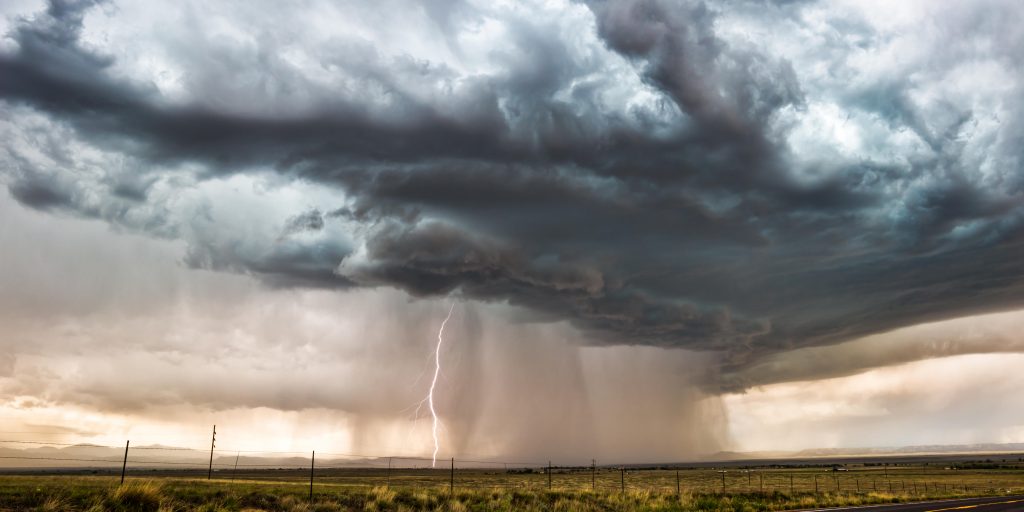How city and county IT leaders can enhance resiliency of critical infrastructure in a busy storm season
Top forecasting organizations are projecting this year’s Atlantic hurricane season to finish with an above-average amount of storm activity. As we move into the peak of the season, now is a good time for government IT departments to reevaluate their disaster preparedness strategies and protect critical infrastructure against extreme weather events.
Mother Nature can cause headaches for city and county IT administrators in the form of unexpected downtime and outages, making this a critical time to evaluate preparedness capabilities. This article outlines some thoughts on how administrators can deploy power management technology to enhance the resiliency of critical systems amid natural disasters.
Laying the foundation
Power management serves as the backbone for city and county disaster preparedness efforts. Many critical services in government health facilities, police stations, schools and other sites are becoming increasingly reliant on IT systems to deliver essential services. An unplanned outage could disrupt medical procedures at a public hospital, lead to widespread class cancellations at local schools or delay the deployment of emergency services, to name just a few potential outcomes.
At the same time, the heavy dependence on IT to carry out critical functions coincides with the sweeping trend toward hybrid work, which a growing number of local administrators are offering to prospective employees as a perk. For staffs with hybrid and remote team members, it’s even more crucial to prepare IT systems to stay up and running amid weather emergencies.
Thankfully, as government IT administrators review their preparedness strategies, there are a multitude of tools available to help enable continuity of services for the citizens these departments serve.
The right tools for the job
Preparing for emergency weather events is like a puzzle, as multiple pieces should fit together to ensure that critical infrastructure stays protected. Following are a few key components of power protection that form the basis of a comprehensive disaster preparedness strategy.
- Hardware: A comprehensive backup power strategy starts with uninterruptible power supplies (UPSs). These battery-powered devices are responsible for ensuring that IT equipment has reliable power during an outage and keeping infrastructure operational until generators are running. Thanks to the emergence of lithium-ion batterytechnology (as opposed to traditional, valve regulated lead-acid batteries), a UPS can last two to three times longer than previous iterations and offer up to six times faster recharging times to enhance recovery. Additionally, UPS network cards enable connectivity and security via integration with software and services.
- Software: Other key elements of a reliable backup power system include disaster avoidance software and predicative analytics tools. As more cities and counties forego centralized IT architecture for a more distributed model, it becomes increasingly important for departments to monitor and manage power equipment in locations where no IT support staff is present. Disaster avoidance software can integrate with power management devices, enabling remote IT support to help mitigate power events before they result in disruptive outages. Additionally, predictive analytics services can help administrators better anticipate the failure of key power components by analyzing data and proactively notifying IT departments when to schedule important services—such as maintenance, repairs or updates—before equipment begins to fail. This helps agencies avoid emergency service calls and schedule updates using convenient maintenance windows.
- Security: While cybersecurity may not be top of mind for most governments and municipalities in relation to weather-related events, it remains an important piece of an overall disaster avoidance strategy. This is especially true when considering the sensitive, personal nature of the information held by city and county agencies and the ramifications of a potential breach. As power devices become more connected, network management cards that meet both UL 2900-1 and IEC 62443-4-2 cybersecurity standards are available to help secure UPSs against potential threats. It’s also important to consider physical security when crafting a disaster preparedness strategy. When disaster strikes, administrators are often asked to juggle more responsibilities, which may leave unprotected facilities susceptible to unauthorized personnel. Physical security goes hand-in-hand with cybersecurity to ensure that infrastructure is sufficiently protected. Employing simple tactics, like installing smart security locks on IT racks, can help protect equipment, ensuring that power management devices remain safe and only authorized personnel can gain entry.
Expecting the unexpected
Storm season is inherently unpredictable, and while weather-related outages won’t impact every corner of the country, there is never a convenient time for a natural disaster to strike. Agencies can plan ahead and implement some of these basic disaster avoidance tactics to best prepare for the worst Mother Nature has to offer. With these tips in mind, administrators can be better equipped to keep critical services up and running in the event of a disaster, reinforcing trust in their communities with those they serve.
Ed Spears is a technical marketing manager in Eaton’s Critical Power Solutions Division in Raleigh, N.C. A 40-year veteran of the power-systems industry, Spears has experience in UPS systems testing, sales, applications engineering and training—as well as working in power-quality engineering and marketing for telecommunications, data centers, cable television and broadband public networks. He can be reached at [email protected], or find more information at Eaton.com.




















